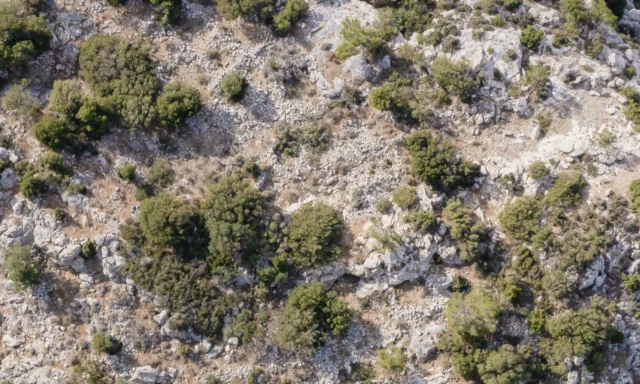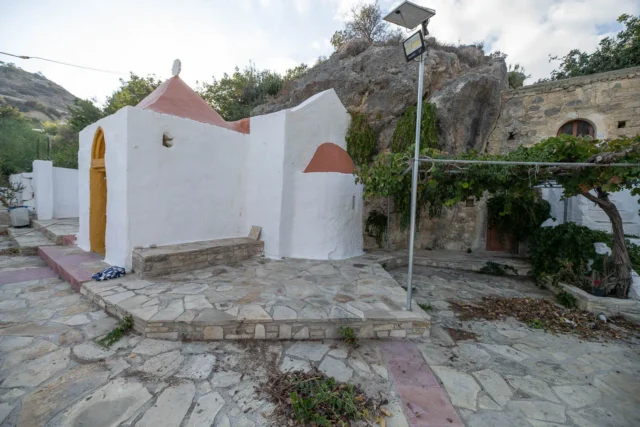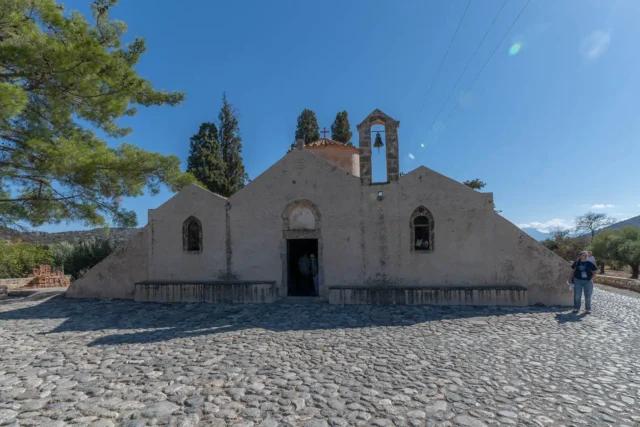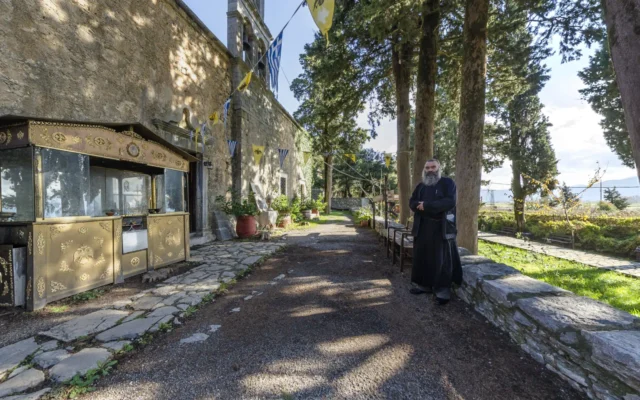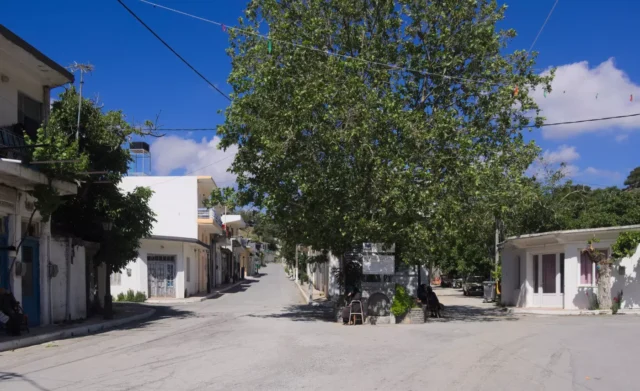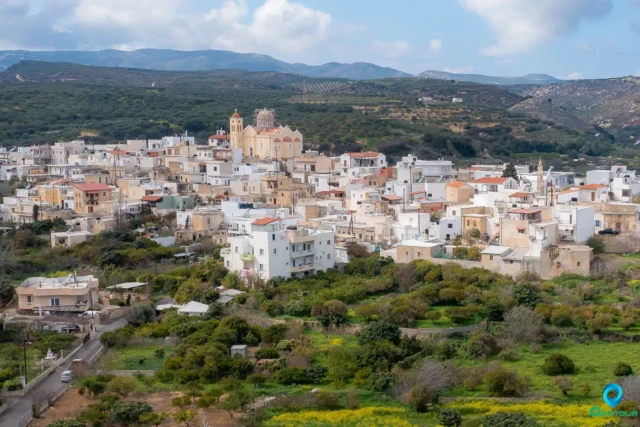135
listings found
Categories
Active filters:
Pinakiano, Lasithi plateau
Pinakiano is a settlement located in the Lasithi regional unit on the island of Crete, Greece. It belongs to the Municipality of Lasithi plateau
Lagou, Lasithi plateau
Lagou is a settlement located in the Lasithi regional unit on the island of Crete, Greece. It belongs to the Municipality of Lasithi plateau
Agios Ioannis Theologos in Kritsa
Located between Kritsa and Kroustas in Crete, this settlement centers on the Monastery of Agios Ioannis Theologos, founded in the 10th century during the Second Byzantine period. Mentioned in a 1219 treaty, its fortified location served as a crucial refuge for rebels ("hainides") against the Venetians and Ottomans. In 1925, its cells were given to Asia Minor refugees. The monastery's katholikon is a triple-aisled basilica with a dome, featuring valuable Byzantine frescoes dated 1347-1348. The naves are dedicated to the namesake, the Metamorphosis tou Sotira, and Agios Charalambos. A 13th-century silver processional cross from the monastery is now housed in the Historical Museum of Crete.
Mesokastellas between Kalamafka and Anatoli
Mesokastellas Fortress: Byzantine ruins in the Dikti Mountains, Crete. Strategically positioned with panoramic views, occupied from prehistoric to Venetian times.
Monastery of Panagia Pantanassa Vagioneas
Located in the Vagioneas area near Anatoli, Ierapetra, this religious site is dedicated to the Life-Giving Spring. Originally a women's monastery founded in 1398 by the prominent anti-Catholic hieromonk Neilos Damilas, it housed a significant school. After Damilas's death, the monastery declined, with its properties transferred to the Patriarchate of Alexandria until 1870. Today, the only surviving structure is a small church, which combines a single-aisled cave church with an 1860 square narthex.
Panagia Kera in Kritsa
A three-aisled, vaulted Byzantine church near Kritsa, Lasithi, with a central dome. The aisles are dedicated to the Dormition of the Theotokos, Saint Anna, and Saint Anthony. Initially built in the Byzantine era, it was renovated in the 14th century, acquiring new frescoes in a Palaiologan style, and again in the 16th century. The interior contains two layers of frescoes from the 13th and 14th centuries, depicting the Christological Cycle, the Second Coming, and a rare image of Saint Francis.
Ancient Oleros
Oleros was an ancient Cretan city inhabited from the Early Iron Age until the Roman period. It was known for its olive oil production and political involvement in Crete.
Ancient Lato
Lato, an ancient city in Crete, reached its peak after the Dorian arrival. Named after the goddess Leto, Lato was strategically located on a hilltop overlooking the Mirabello Gulf. The city was heavily fortified, with strong walls, gates, and towers. Lato was one of the most powerful city-states in ancient Crete, with a well-organized political structure and a thriving economy. The city's port, Lato pros Kamara, facilitated trade and contributed to its growth. The archaeological site of Lato features well-preserved remains, including the agora, prytaneion, theater, temples, and private houses. Lato was eventually abandoned in the Roman era but was rediscovered in the late 19th and early 20th centuries. Today, it is a popular tourist destination, offering visitors a glimpse into the life of an ancient Cretan city. Lato was the birthplace of Nearchus, a famous admiral who served under Alexander the Great.
Avrakontes, Lasithi plateau
Avrakontes is a settlement located in the Lasithi regional unit on the island of Crete, Greece. It belongs to the Municipality of Lasithi plateau

Kalavros, Siteia
Kalavros is a settlement located in the Lasithi regional unit on the island of Crete, Greece. It belongs to the Municipality of Siteia and is 12.6 kilometers away from the […]
Kato Krya, Siteia
Kato Krya is a settlement located in the Lasithi regional unit on the island of Crete, Greece. It belongs to the Municipality of Siteia and is 12.6 kilometers away from the town Siteia and 5.6 kilometers away from Lithines
Chochlakies, Siteia
Chochlakies, a small village in eastern Crete's Sitia province, is known for its untouched natural beauty. The village is nestled in a valley, with a gorge leading to Karoumes Beach. Chochlakies offers a glimpse into traditional Cretan life, with a restored watermill dating to 1919 and traces of Minoan settlements, including a fortification and cave. The Chochlakies Gorge, also called Karoumes Gorge, features the Flega stream and ends at Karoumes Beach. The gorge trail, part of the E4 European Path, passes through varied terrain, from olive groves to steep rock formations. The village is accessible by car from Xerokampos and is near Palaikastro and Zakros. Tourism remains minimal, preserving the tranquil atmosphere.
Piskokefalo, Siteia
Piskokéfalo, a large village in Siteia, Crete, was a Venetian fiefdom of the Kornaros family, including poet Vitsentzos Kornaros. The village features a restored Kornaros residence and watermill, intended as a museum. Near Katrinia hill, a rural temple with Minoan artifacts was unearthed, and a Minoan mansion's ruins remain. Piskokéfalo was the Turkish administration seat until 1871. The nearby ruined settlement of Trapezonda, also linked to the Kornaros family, was destroyed multiple times, including by Barbarossa. The village's population has fluctuated over time, reaching 642 residents in 2011.
Kato Episkopi, Siteia
Kato Episkopi, a village in Siteia, Lasithi, Crete, sits at 40 meters altitude. Historically significant, it contains a converted 11th-century bathhouse, now the Church of the Holy Apostles Peter and Paul, likely a bishopric seat during the Second Byzantine period. Archaeological finds include vaulted tombs and a Roman building. The church's architecture features an octagonal dome and imitates ashlar masonry. The village has seen various populations, including Muslims and Christians, through Ottoman and later rule. Its history is documented through Ottoman surveys and censuses.
Adravastoi, Siteia
Adravastoi, a small village in Sitia, Lasithi, eastern Crete, has a rich history dating back to ancient times, with traces of habitation found on the Entichis elevation. The village was likely destroyed by pirates in 1471 and repopulated later. Its economy is based on agriculture, livestock and small-scale tourism. The village features traditional architecture, including single and two-story stone buildings with earthen or modern roofs, and the two-aisled church of Agios Dimitrios and Zoodochos Pigi. Adravastoi is located near Palekastro and Zakros and is part of the Municipality of Sitia.
Zakros, Siteia
Zakros, a village on Crete's east coast, was once an important Minoan settlement. The ruins of the Minoan palace are a popular tourist destination and an important archaeological site. The village is also known for the Gorge of the Dead, named for the numerous Minoan Age tombs found in the caves along its sides. The Water Museum houses artifacts and tools related to the history of water use in the area, and the Folklore Museum displays exhibits on the traditional way of life in the region. Kato Zakros has a beautiful beach, and the nearby beach of Xerokambos is also worth visiting. The area around Zakros offers opportunities for hiking and exploring the natural beauty of the region.











